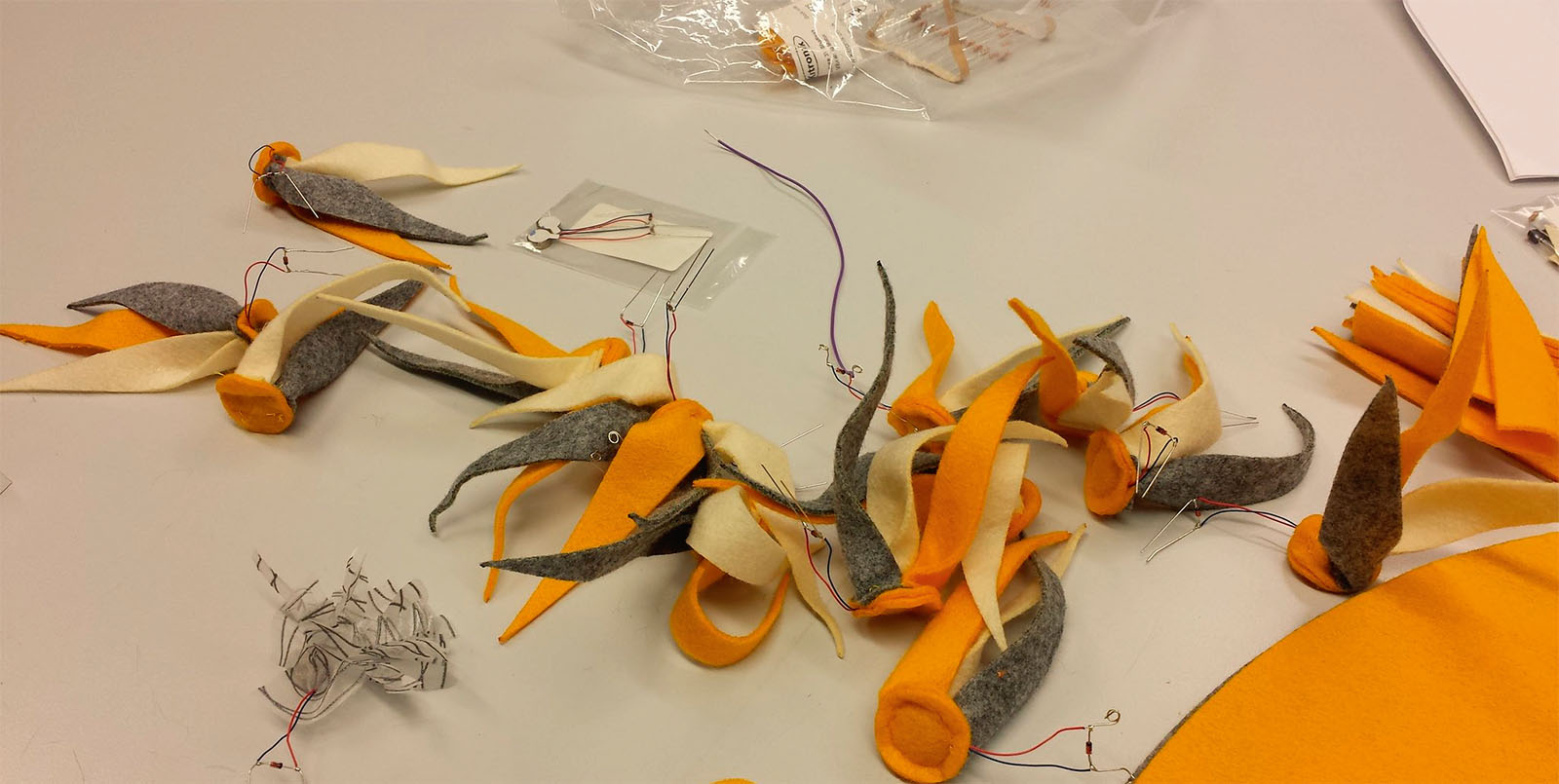In the frame of “An Internet of Soft Things” based at Nottingham Trent University and funded by the EPSRC, UK.
Dimensions: various.
Materials: Electronic components (vibrating motors, Leds, diodes, resistors, sensors, breadboards, wires, Arduino board, Photon boards), conductive textiles (fibers and fabrics), calico, felt.
Techniques: Laser cut, sewing, soldering, embroidery.
Project description
“An Internet of Soft Things” project challenged how a radically connected world would be designed to benefit human wellbeing, and in particular, what types of experience can be instigated from smart textile interfaces. The aim of the research project was to use textile craft practice and smart materials alongside therapeutic approaches to contribute to the development of a wellbeing and mental health toolkit to support future client work for Mind – the UK’s largest mental health charity.
A series of hand-hold textile objects, a reactive rug, a vibrating textile object and a series of cushions were design and networked. These electronic objects were used to collect data from the participants in relation to everyday activities such as journeys between home and Mind centers or around town, as well as to illustrate electronic textiles technical possibilities: a digital input and an analogue input, as well as wireless communication in relationship to other objects developed in the frame of the project.
My role in the project was to contribute to the development of e-textiles objects, to ensure the technical reliability of electronic components and to develop soft circuitry. I was also the organizer of Arcintex’15 workshops that took place in Nottingham in February 2015.
The “Vibrating Surface” prototype has been exhibited during eTextile Cuvée 2016, Paillard Contemporary Art Center, France.
[ngg src=”galleries” ids=”12″ display=”basic_thumbnail” override_thumbnail_settings=”1″ thumbnail_width=”400″ thumbnail_height=”300″ number_of_columns=”4″ show_slideshow_link=”0″]
